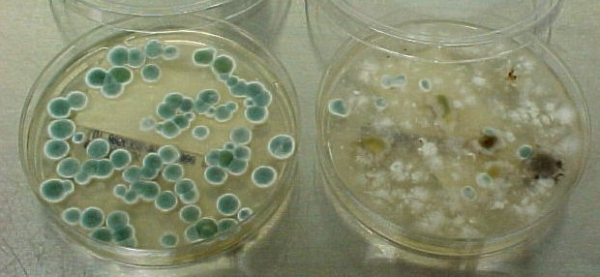Mold Inspections & Mold Prevention
As part of an initial mold assessment, Curren will perform a visual inspection for the conspicuous presence of mold. A class of fungi, molds have been found to cause a variety of health problems in humans, including allergic, toxicological, and infectious responses. Molds are decomposers of organic materials, and thrive in humid environments, and produce spores to reproduce, just as plants produce seeds. When mold spores land on a damp area, they begin growing and digesting whatever they are growing on in order to survive. When excessive moisture or water accumulates indoors, mold growth will often occur, particularly if the moisture problem remains undiscovered or unaddressed. Of particular concern are interior areas of buildings characterized by poor ventilation and high humidity which are are the most common locations of mold growth.
Building materials including drywall, wallpaper, baseboards, wood framing, insulation and carpeting often play host to such growth. Moisture control is the key to mold control. Molds need both food and water to survive; since molds can digest most things, water is the factor that limits mold growth.
The EPA recommends the following action to prevent the amplification of mold growth in buildings:
- Fix leaky plumbing and leaks in the building envelope as soon as possible;
- Watch for condensation and wet spots. Fix source(s) of moisture problem(s) as soon as possible;
- Prevent moisture due to condensation by increasing surface temperature or reducing the moisture level in air (humidity). To increase surface temperature, insulate or increase air circulation. To reduce the moisture level in air, repair leaks, increase ventilation (if outside air is cold and dry), or dehumidify (if outdoor air is warm and humid);
- Keep heating, ventilation, and air conditioning (HVAC) drip pans clean, flowing properly, and unobstructed;
- Vent moisture-generating appliances, such as dryers, to the outside where possible;
- Maintain low indoor humidity, below 60% relative humidity (RH), ideally 30-50%, if possible;
- Perform regular building/HVAC inspections and maintenance as scheduled;
- Clean and dry wet or damp spots within 48 hours;
- Don't let foundations stay wet. Provide drainage and slope the ground away from the foundation.
Curren's mold inspections are meant to evaluate for mold problems and provide solutions to address the problems. Often times we find that it is not worth the expense to test areas that have visible mold growth. In these cases a plan is developed to remediate the problem.



